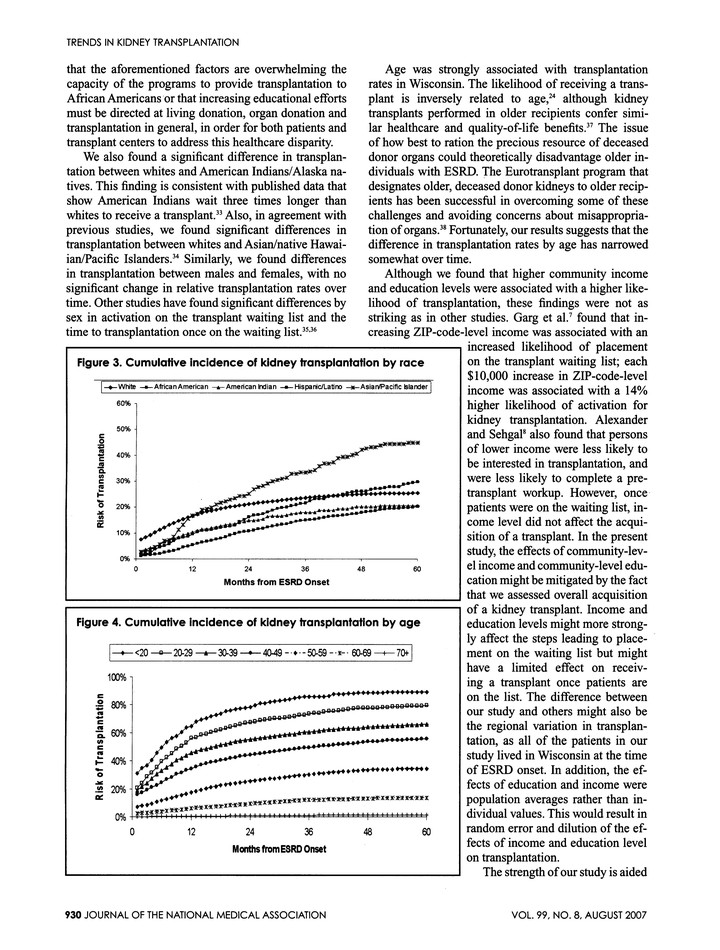Trends in kidney transplantation rates and disparities

Abstract
OBJECTIVE: To examine the likelihood of transplantation and trends over time among persons with end-stage renal disease (ESRD) in Wisconsin. METHODS: We examined the influence of patient- and community-level characteristics on the rate of kidney transplantation in Wisconsin among 22,387 patients diagnosed with ESRD between January 1, 1982 and October 30, 2005. We grouped patients by the year of ESRD onset in order to model the change in transplantation rates over time. RESULTS: After multivariate adjustment, all other racial groups were significantly less likely to be transplanted compared with whites, and the racial disparity increased over calendar time. Older patients were less likely to be transplanted in all periods. Higher community income and education level and a greater distance from patients’ residence to the nearest dialysis center significantly increased the likelihood of transplantation. Males also had a significantly higher rate of transplantation than females. CONCLUSION: These results demonstrate a growing disparity in transplantation rates by demographic characteristics and a consistent disparity in transplantation by socioeconomic characteristics. Future studies should focus on identifying specific barriers to transplantation among different subpopulations in order to target effective interventions.